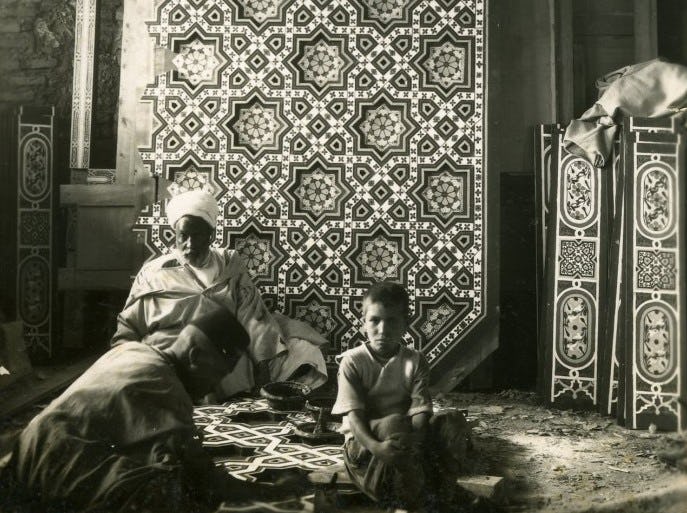Plaster and Polychrome Glass Windows with Architectural and Vegetal Motifs
Date1937
MediumPlaster, colored glass
DimensionsEach window: 23 3/4 x 15 in. (60.3 x 38.1cm)
ClassificationsGlass
Credit LineCourtesy of the Doris Duke Foundation for Islamic Art
Object number46.1.1-82
DescriptionThese arched windows of brightly colored glass are known as chemmassiat, a term derived from the Arabic word for “sun.” This type of window is created from brightly colored glass set into patterns within a gypsum frame. Not only decorative, the colorful glass absorbs the rays of the sun to protect the interior from the heat of the day. The windows are arranged in a pattern of alternating floral and geometric designs. These windows, along with other architectural features and furnishings of Shangri La, were created in the 1930s by contemporary Moroccan craftsmen under the supervision of a French firm in Rabat, S.A.L.A.M. René Martin. The windows are based on designs recorded in a two-volume publication by a French administrator in Morocco Jean Galloti, Le Jardin et la Maison Arabes au Maroc (“The Arab Garden and House in Morocco”). This publication illustrated chemmassiat in madrasas in Fez, Marrakech, and Salé.
During the first half of the twentieth century, Morocco was experiencing a revival of traditional art under the strict administration of the French colonial rule, which saw the restoration of traditional arts as both an economic opportunity and a means of legitimizing their authority. Museums and schools were established in order to reinforce what was perceived as an authentic aesthetic. While the commission of Moroccan furnishings at Shangri La took place within this context, the close collaboration between the patron, designers, architects, and craftsmen deviated from the typical aesthetic illustrated in Gallotti’s book and enforced by the French colonial administration in Morocco.
On View
On viewCollections
















